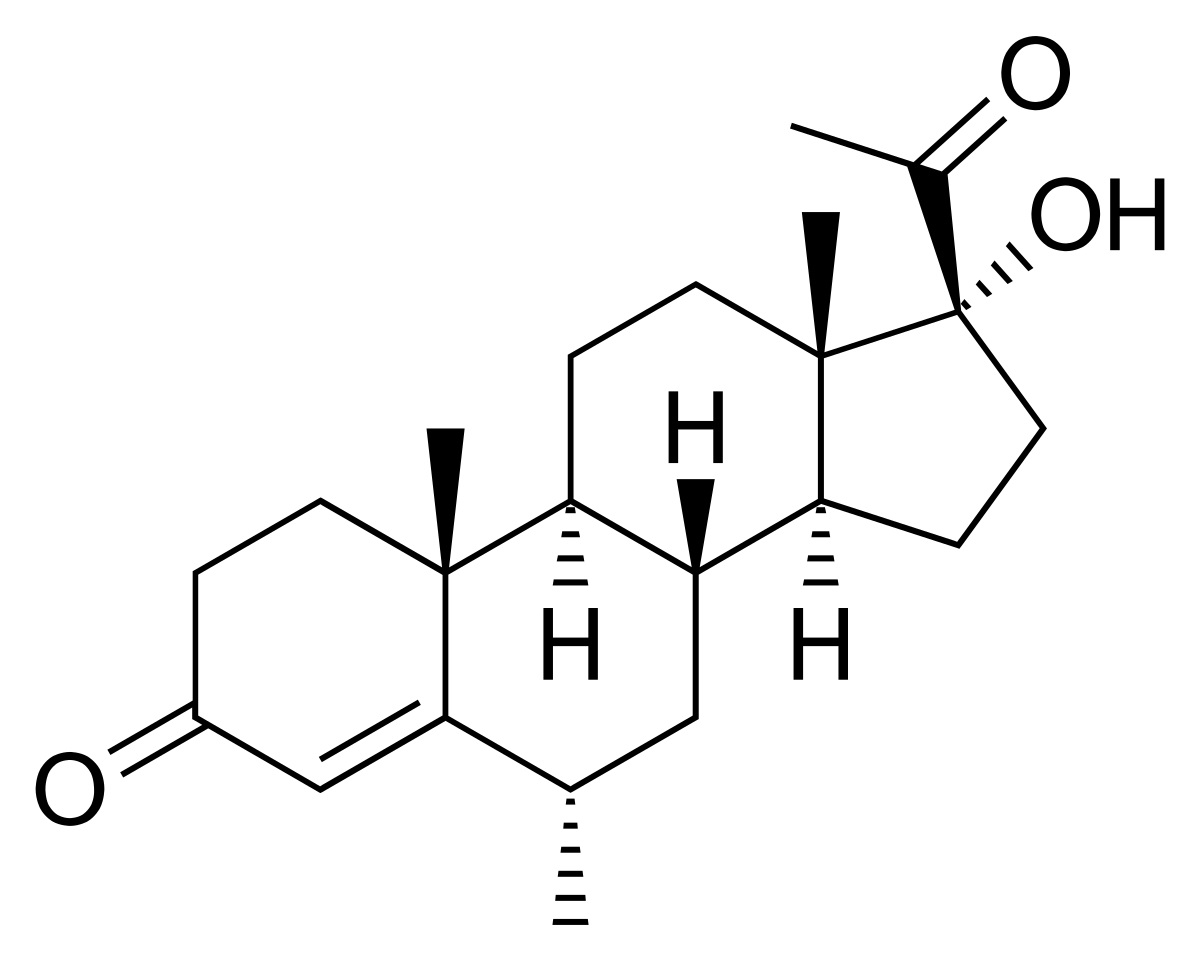Medroxyprogesterone
- I. Introduction to Medroxyprogesterone
- II. Composition of Medroxyprogesterone
- III. Understanding How Medroxyprogesterone Works
- IV. Approved Uses of Medroxyprogesterone
- V. Off-label Uses of Medroxyprogesterone
- VI. Dosage and Administration of Medroxyprogesterone
- VII. Potential Interactions with Medroxyprogesterone
- VIII. Side Effects and Management
- IX. Contraindications and Warnings for Medroxyprogesterone Use
- X. Special Considerations for Medroxyprogesterone Administration
- XI. Overdose: Prevention, Symptoms and Management
- XII. Important Precautions and Careful Administration
- XIII. Storage and Handling Precactions for Medroxyprogesterone
I. Introduction to Medroxyprogesterone
A. Brief overview of medroxyprogesterone
Medroxyprogesterone, commonly called Depo Provera, is a progestin widely used in various aspects of female reproductive health. It mimics the functions of the natural hormone progesterone. Has a wide range of applications in healthcare. One of its roles is in regulating the menstrual cycle and affecting fertility.
B. History and development of the drug
The origins and advancement of medroxyprogesterone can be traced back to the middle of the century when researchers were searching for artificial hormones that could effectively manage and regulate different bodily functions. Medroxyprogesterone was initially created in 1957. Its medical applications soon became apparent. It received approval from the U.S. Food and Drug Administration in the 1960s to address various gynecological concerns, and ever since, it has been widely utilized in women's healthcare.
II. Composition of Medroxyprogesterone
A. Active ingredients
The main component found in all medications is medroxyprogesterone acetate, a potent progestin that influences the endometrium and the menstrual cycle. This artificial compound is the element responsible for producing the intended therapeutic benefits.
B. Inactive ingredients
Apart from the ingredient, medroxyprogesterone medications often include additional substances called excipients. These inactive ingredients, found in medication like tablets or injections, can include lactose, sucrose, talc, and various types of starch. These components play roles, such as providing bulk to the tablet, preserving the medication aiding in its absorption, and enhancing its taste.
III. Understanding How Medroxyprogesterone Works
A. Mechanism of action
Medroxyprogesterone functions by imitating the hormone progesterone found naturally in the body. Acting as a lab-made progestin, it attaches to progesterone receptors in the body, producing outcomes. This process brings alterations in the uterus that hinder its capacity to provide an environment for a fertilized egg. Additionally, it thickens mucus making it more difficult for sperm to penetrate, lowering the chances of conception1.

B. Impact on hormonal balance
Medroxyprogesterone is crucial in maintaining equilibrium in the female body. It balances estrogen and progesterone levels, which is particularly important during the menstrual cycle. By countering the effects of estrogen, medroxyprogesterone helps prevent the growth of the endometrium, effectively reducing the risk of endometrial hyperplasia or cancer.
IV. Approved Uses of Medroxyprogesterone
A. Menstrual disorders
Medroxyprogesterone is commonly prescribed to address menstrual conditions. These conditions encompass uterine bleeding not tied to the menstrual cycle, absence of menstrual periods (amenorrhea), and painful menstrual periods (dysmenorrhea). Addressing imbalances can provide relief and establish a regular menstrual cycle.
B. Prevention of endometrial hyperplasia
During the phase of menopause or post-menopause, in women, there is a possibility of developing endometrial hyperplasia caused by estrogen without any opposition. Medroxyprogesterone, included in hormone replacement therapy (HRT), can help prevent this growth and significantly decrease the chances of developing endometrial cancer.
C. Secondary amenorrhea
Secondary amenorrhea, which refers to the cessation of periods for several months in women who previously had a regular cycle, can also be addressed using medroxyprogesterone. This medication effectively restores a hormonal state and facilitates the return of regular menstrual cycles.
D. Use in hormone replacement therapy
Medroxyprogesterone plays a role, in various hormone replacement therapies, especially for women who have reached menopause. It works to maintain an endometrium by balancing the effects of estrogen, thereby reducing the chances of hyperplasia or malignancy.
V. Off-label Uses of Medroxyprogesterone
A. Management of endometriosis
Although it has not received the endorsement, medroxyprogesterone has been employed in an off-label capacity for treating endometriosis, a condition characterized by the growth of endometrial tissue beyond the uterus. By modulating hormones, medroxyprogesterone can assist in alleviating symptoms, such as pain and irregularities, in menstrual cycles3.
B. Role in fertility treatments
Although primarily used as a contraceptive, medroxyprogesterone also has applications in fertility treatments. It is utilized in controlled hyperstimulation protocols to prepare the endometrium for implantation in, in vitro fertilization (IVF) procedures.
C. Use in specific cancer treatments
An additional exciting application of medroxyprogesterone is its off-label usage in providing care for certain types of cancers, especially hormone-responsive breast and endometrial cancers. Its mechanism involves countering the tumor-promoting effects of estrogen on these tissues, thereby impeding tumor growth.
D. Application in transgender hormone therapy
Medroxyprogesterone has a role in transgender hormone therapy, especially for trans women. As a progestin, it plays a part in developing secondary sexual characteristics typically associated with females and can aid in reducing the production of natural testosterone.
VI. Dosage and Administration of Medroxyprogesterone
A. Standard dosage for different conditions
The amount of medroxyprogesterone needed depends on the specific condition being treated. For instance, if you're dealing with disorders, taking 5 10 mg daily for 5 10 days during the latter half of your cycle is typically recommended. To prevent hyperplasia, the usual dosage is 5 10 mg daily for 12 14 days each month. In cases of amenorrhea, the usual recommendation is to take 5 10 mg per day for 5 10 days.2

B. Variations in dosage based on individual factors
Various personal factors such as weight, age, and overall health can impact the dosage needed. Additionally, doctors might adjust the dose depending on how the patient responds to it and their ability to tolerate it.
C. Proper administration techniques
Medroxyprogesterone can be taken either in pill form or through an injection. When taking it orally, it is advised to have it with a meal so that it is better absorbed by the body. On the hand, injections should be given by a healthcare professional either into a muscle or under the skin.
VII. Potential Interactions with Medroxyprogesterone
A. Drug-drug interactions
Similar to medications, medroxyprogesterone has the potential to interact with other drugs. For example, specific anticonvulsants, barbiturates, and HIV medications can reduce their effectiveness by accelerating their metabolism in the body. When using it alongside hormonal treatments, it is essential to exercise caution and closely monitor the situation.
B. Drug-food interactions
While taking medroxyprogesterone, it is advisable to be cautious with alcohol consumption as it can worsen side effects, like dizziness and impaired judgment. It is best to limit the intake of alcohol while using this medication.
C. Impact of other health conditions on drug's efficacy
Certain medical conditions can influence how well and safely medroxyprogesterone works. For instance, individuals with liver disease, a history of stroke, or a previous breast cancer diagnosis may require treatment options because of the higher risks of this medication.
VIII. Side Effects and Management
A. Common side effects
Some of the side effects of medroxyprogesterone include;
- Changes in weight
- Feeling nauseous or experiencing abdominal discomfort
- Sensitivity or tenderness in the breasts
- Alterations in the menstrual cycle
- Experiencing headaches
Please note that these are just some of the potential side effects that could occur while taking medroxyprogesterone.

B. Severe but rare side effects
Common but significant adverse effects may include;
- Changes in mood, like depression
- Liver dysfunction or jaundice
- Allergic reactions such as itching or rash
- Unusual weakness or fatigue
If any of these side effects manifest, it is essential to seek medical attention.
C. Strategies for managing side effects
Side effects can frequently be addressed by modifying the dosage, adjusting the timing of medication, or incorporating treatments. It is always advisable to seek guidance from a healthcare professional regarding managing side effects.
IX. Contraindications and Warnings for Medroxyprogesterone Use
A. Pre-existing conditions impacting use
Certain medical conditions can affect the safety of using medroxyprogesterone. Individuals who have previously experienced thromboembolic disorders, liver disease, or been diagnosed with breast or reproductive system cancers should refrain from using this medication. Moreover, individuals with vaginal bleeding or a history of stroke or heart attack should proceed cautiously.
B. Allergies and hypersensitivity
If individuals have experienced any allergies or sensitivities to medroxyprogesterone or any of its ingredients, it is not recommended for them to use this medication. Allergic reactions may present as:
- Skin rashes
- Itching
- Swelling
- Intense dizziness
- Trouble breathing

C. Risk factors for complications
Factors that might make treatment complicated include:
- Overweight
- Smoking
- High blood pressure
- Diabetes
- High cholesterol levels
These risk factors can significantly increase the chances of developing problems, so it's essential to have a detailed discussion with a healthcare professional before starting any therapy.
X. Special Considerations for Medroxyprogesterone Administration
A. Administration in the elderly
Although there are no contraindications, it is essential to exercise caution when giving medroxyprogesterone to elderly individuals. As they experience changes due to age, their ability to process the medication may be affected, potentially leading to a higher risk of side effects. Therefore, monitoring them and potentially adjusting the dosage if necessary is crucial.

B. Use during pregnancy and breastfeeding
Medroxyprogesterone falls into the category of drugs known to harm the fetus if taken during pregnancy, making it a pregnancy category X medication. It is advisable for breastfeeding mothers to refrain from using it as it can pass into breast milk and possibly impact the nursing infant.

C. Use in pediatric populations
The safety and effectiveness of medroxyprogesterone in children has not been determined. It is advised to use caution when considering its use in pediatric populations.

XI. Overdose: Prevention, Symptoms and Management
A. Identifying signs of overdose
Recognizing an overdose is crucial. Watch out for signs of nausea, throwing up, vaginal bleeding, tiredness, and pain in the abdomen.
B. First steps in case of overdose
If you suspect someone has overdosed, it's crucial to seek help right away. While waiting for assistance, ensure the person is comfortable and keep them as calm as possible.
C. Professional medical interventions for overdose
When someone arrives at a healthcare facility, healthcare professionals might use methods to handle an overdose. This can include techniques like lavage giving activated charcoal or providing symptomatic treatment based on the individual's condition.
XII. Important Precautions and Careful Administration
A. Regular monitoring and follow-ups
It is essential to maintain checkups and follow-up appointments when undergoing medroxyprogesterone therapy. These appointments are necessary for evaluating the medication's effectiveness managing any side effects, and making adjustments, to the dosage if needed.
B. Impact of lifestyle factors on drug effectiveness
Factors related to one's lifestyle, including choices, physical activity, and stress levels, can affect medication effectiveness. For example, consuming a fat diet and smoking can lower the drug's effectiveness and raise the likelihood of experiencing complications.

C. Adherence to prescribed dosages and schedules
It is crucial to follow the recommended dosages and schedules for treatment. When you skip doses or don't take the medication regularly, it can lessen its effectiveness. Raise the chances of developing resistance to the drug.
XIII. Storage and Handling Precactions for Medroxyprogesterone
A. Optimal storage conditions
Store Medroxyprogesterone at room temperature, away from sunlight and moisture. It's best to avoid storing it in bathrooms or any places with humidity. Make sure not to freeze it.
B. Safety measures during handling and disposal
To ensure the handling of medroxyprogesterone, avoiding getting it in contact with your eyes or skin is essential. Remember to wash your hands after using the medication. If you need to dispose of it, please refrain from flushing it down the toilet or pouring it into drains unless specifically instructed. Instead, if available in your area, consider utilizing drug take-back programs for disposal.


























